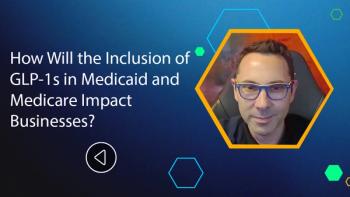
Seizing the Undiagnosed Patients Market Opportunity
There is a tremendous, untapped market of undiagnosed patients for a variety of conditions, writes John Pagliuca. But how do you identify them when they are essentially hidden from view through conventional means?
Imagine you were given the choice of fishing in two ponds. The first pond is filled with other anglers, all competing to try to land the same fish. The other pond, which potentially has even more fish than the first, has no one on it. Which do you think would give you the best chance of coming home with enough fish for a banquet?
This is the opportunity today in front of a broad group of life sciences and pharma commercial personnel, including marketing directors, brand managers, market research directors, sales directors and managed market strategists. There is a tremendous, untapped market of undiagnosed patients for a variety of conditions. These are individuals who either have the condition but have not had it detected (often patients who are overdue for a physical exam or laboratory work), or those who do not have the condition yet but are trending towards it.
Informing physicians regarding these undiagnosed patients may fortify their practices, both in enhanced patient care and financial growth. Yet, how do you identify them when they are essentially hidden from view through conventional means?
Behavioral analytics discover the potential
This is where next-generation behavioral analytics can be a real difference-maker. Like a fish finder providing a picture of what’s below the surface to fishermen, behavioral analytics – along with socioeconomic and attitudinal data - help uncover a multitude of opportunities for life sciences organizations that don’t show up in clinical or claims data alone.
Your commercial teams are now able to make these discoveries by looking at a much broader expanse of data, including socioeconomic and demographic indicators, such as income, education, spending patterns, ethnicity, home values in a given area, age, gender, health services utilization (primary care versus more expensive emergency department visits), coupled with medical and pharmacy claims data.
Leveraging predictive and prescriptive analytics methodologies, these data are then crunched and used to develop “Patient Personas” that represent new and unique patient segments and their propensity toward certain conditions. Armed with this information, sales and marketing teams can approach their targeted physicians or, at an Integrated Delivery Network (IDN) level, share these persona types along with their total cost of care and inform them on what types of patients may need to be educated or provided therapeutic care.
Here’s an example of how these behavioral analytics can benefit life sciences/pharma organizations, physicians and patients. The analytics show that patients in a particular neighborhood tend to be older, have lower income, work on an hourly rather than salaried basis, and possess a 10th grade or less education. There are a lot of fast food restaurants in that area and very few grocery stores selling fresh food, so their diets tend to be high in sugars and saturated fats.
Patients of this type tend to use the emergency department as their primary healthcare facility, either because they don’t have an established relationship with a primary care doctor or can’t afford to take time away from work to see a physician for preventive care.
With that persona in hand, life science company representatives can compare it to demographic information about patients in the area a physician or hospital serves, to demonstrate which conditions are likely to be prevalent amongst its population. (In this specific example, there is a high risk of diabetes and heart disease.) The provider can then use this information to stratify the population and begin targeting patients to be checked for those conditions.
In the meantime, your sales and marketing teams have the opportunity to demonstrate why your organization’s treatment will deliver the best results for that population based on evidence in the real world – without having to worry about competing directly with other companies’ commercial teams for the business. Additionally, your team will be building a higher-value relationship with providers by identifying opportunities no one else is bringing to them.
Getting out ahead
These same behavioral analytics can be applied to identify patients who may not be classified as having a condition such as diabetes or heart disease yet, but are trending (or likely to trend) in that direction. Once again, by comparing the personas to patient information, pharma companies’ commercial teams can identify a sub-segment of the population who are at higher risk of acquiring these conditions once certain triggers are met.
Age is one trigger. The data may show that once a patient who meets certain other criteria crosses over from the 18-35 to the 36-50 age range, the risk of developing certain conditions increases by X percent. An increase in emergency department utilization could be another, as the issues being treated may be indicators of a deeper underlying problem that is developing.
Identifying these issues early give physicians the opportunity to address them before they become more serious (and expensive), both with patient education and pharmaceuticals. It also creates a new market opportunity for life sciences companies to sell products that help prevent those conditions from developing, such as a weight control drug to reverse a trend toward obesity, hypertension, diabetes or other conditions.
Cast a wider net
As massive as the life sciences industry is already, there is still tremendous untapped potential in the form of all the undiagnosed patients who also need your solutions. Rather than fighting for space on an already crowded pond, the better solution is to find a new pond where you can cast a net rather than a pole and expand your market exponentially, with little competition (or margin pressure). All while building better relationships with your provider customers by helping them deliver better care.
John Pagliuca is Vice President, Life Sciences at
Newsletter
Lead with insight with the Pharmaceutical Executive newsletter, featuring strategic analysis, leadership trends, and market intelligence for biopharma decision-makers.





